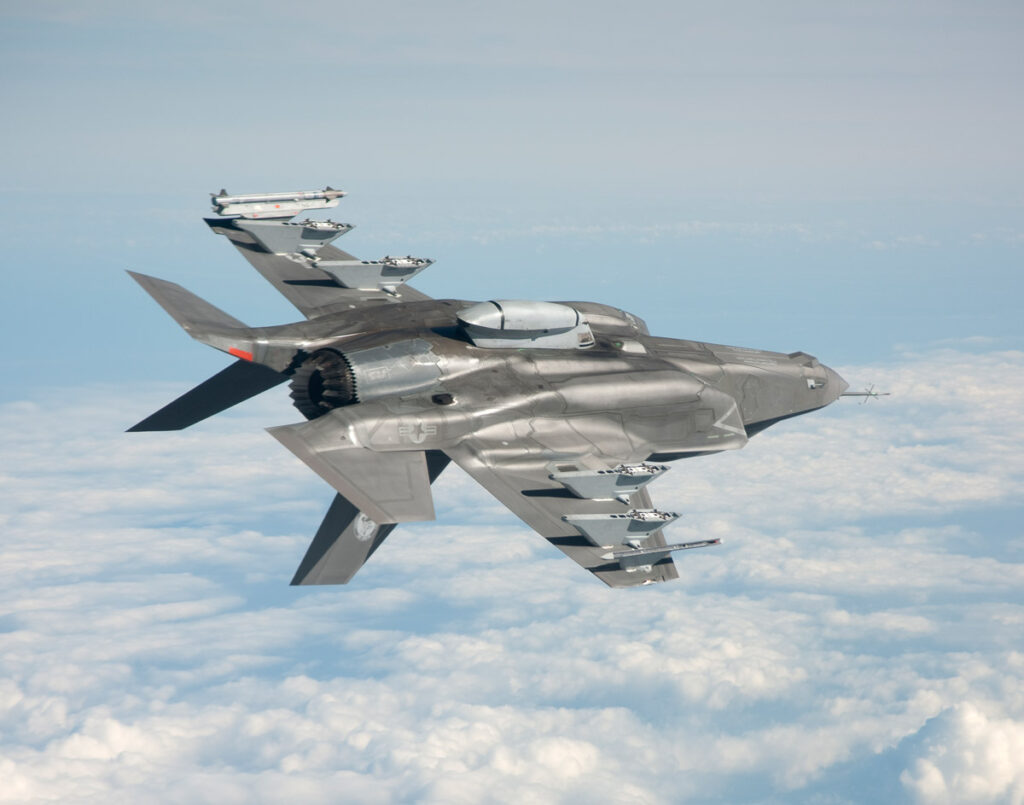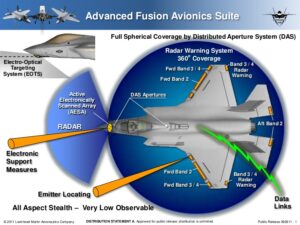F-35 Ready For Missile Defense By 2025: MDA Chief
Posted on

F-35B
CAPITOL HILL: F-35 Joint Strike Fighters could detect, track, and, possibly, even shoot down ballistic missiles by 2025, the Missile Defense Agency director told Congress this morning.

Lt. Gen. Samuel Greaves
“I’d say six to seven years to essentially work out the Concept of Operations (and) develop the capabilities — (whether) it’s sensor-based or a new fast missile that’s hung on the bottom of an F-35 for the BMDS (Ballistic Missile Defense) mission — integrate those capabilities, test them, and deliver them into a theater of operations,” Lt. Gen. Samuel Greaves told the Senate appropriations subcommittee on defense. “We see that deployed capability as, if not a game changer, then a significant contributor to future ballistic missile defense.”
This is the first time we’ve heard a senior official say how long it might take to incorporate F-35s into missile defense. The military has tested out the concept in the past. In 2014, an F-35 infrared sensor installed on a surrogate aircraft successfully tracked a launch and transmitted tracking data over the military’s standard Link-16 network. In 2016, an actual Marine Corps F-35B detected and tracked a missile, then passed the data over the Navy’s NIFC-CA network to the Aegis missile defense system, which shot the threat down.
So F-35 fans have been talking up the plane’s missile defense potential. Congressman Duncan Hunter boasted last year that the stealth fighter could not only track ICBMs — whose fiery launch is “like an Act of God,” hard to miss — but also shoot them down with its current air-to-air missile. “You can shoot down missiles coming out of North Korea in the boost phase with CAPS (Combat Air Patrols) of F-35s and AMRAAMs, and I’ve got a map to show it,” he declared.
Maybe. The AMRAAM missile isn’t designed to chase an ICBM into space, so it would have a narrow window to kill one before it escaped the atmosphere. Greaves’s wording suggests using the F-35 to shoot ICBMs might require developing “a new fast missile,” which would take years to develop.
What the F-35 can already do is act as a sensor. Its Distributed Aperture System (DAS) can pick up the infrared emission of a boosting rocket, its computers can pinpoint the threat’s location, and its network connections can transmit tracking data to the rest of the force. What’s more, since the US military is buying a projected 2,443 F-35s — 1,763 for the Air Force alone — there’ll be lots of them in danger zones around the world. Developing a new weapon to turn them into missile killers would be expensive, but tweaking them to make them missile trackers is probably not, and it would add a whole new kind of sensor to the global missile defense system.

F-35 sensors
“I was talking with the undersecretary for policy, (John) Rood, and he suggested — and I immediately agreed with him — that just about any AOR (Area of Responsibility) that we move to deploy to mitigate a conflict, platforms such as the F-35 will the present,” Greaves told the subcommittee. “The idea we have is to leverage, as an example, that sensor capability, integrate it with other sensors….and provide engagement quality information. It’s a tremendous potential.
“Our job is to look outside of the classic missile defense system” — Patriot, THAAD, GBI — “and look for sensors and shooters that would be able to contribute when integrated into the BMDS, and we see F-35 as one,” Greaves said. “We’ve been working with the Air Force at least the last few months, and we did a test (with the Navy) a few years ago.”
Besides the Air Force, Greaves said the regional Combatant Commanders (COCOMs) would play a vital role, specifically in figuring how to use the F-35 in real-world missions: “The Concept of Operations (CONOPS) is not my area; that is for the combatant commander,” Greaves said.
Greaves didn’t say so explicitly, but the commander in question is almost certainly that of Pacific Command, which confronts North Korea. Unlike Russia or China with their vast territories and massive anti-aircraft defenses, North Korea’s launch sites are relatively close to US airbases and could even be targeted by fighters outside North Korean airspace.
Subscribe to our newsletter
Promotions, new products and sales. Directly to your inbox.
